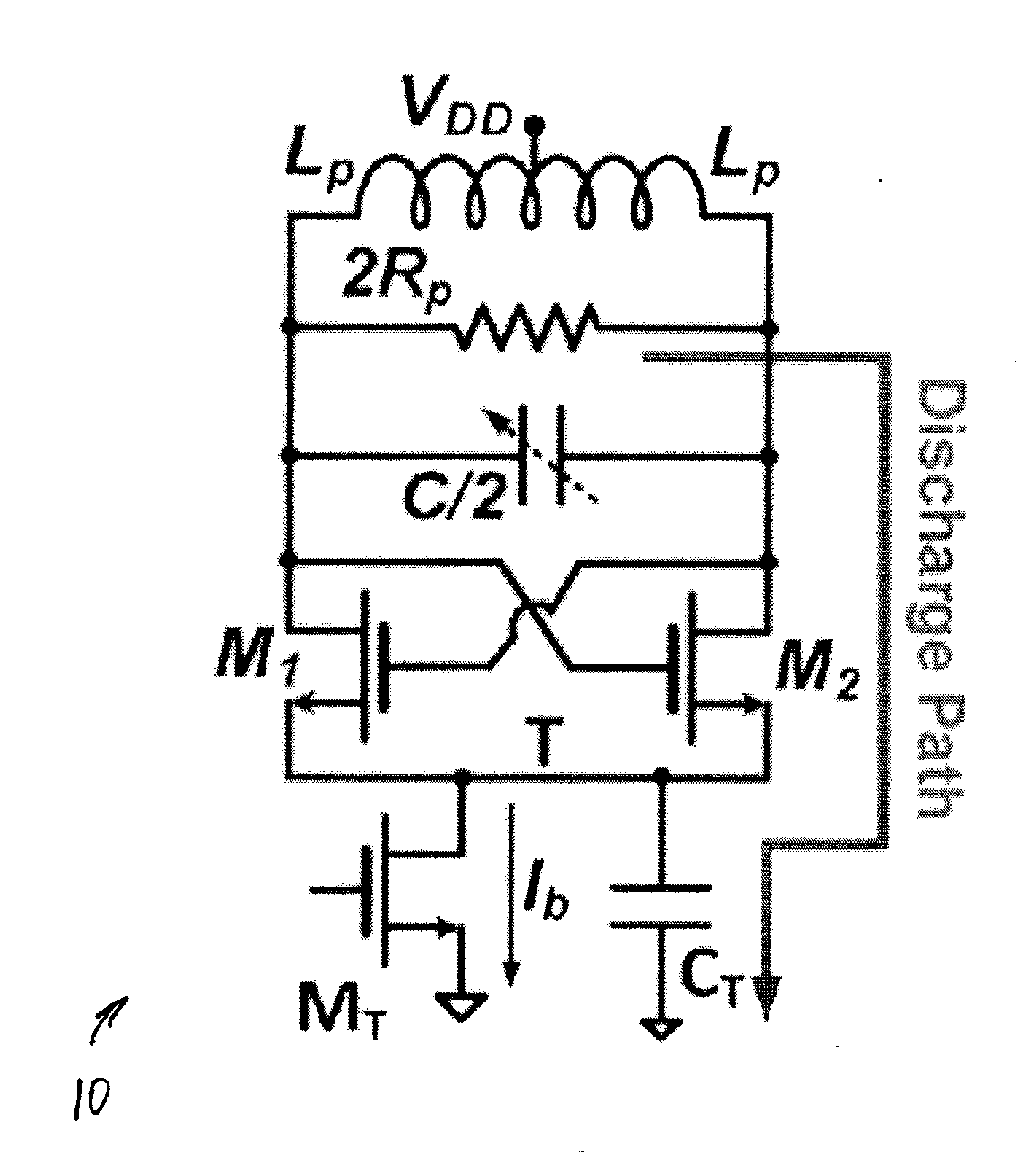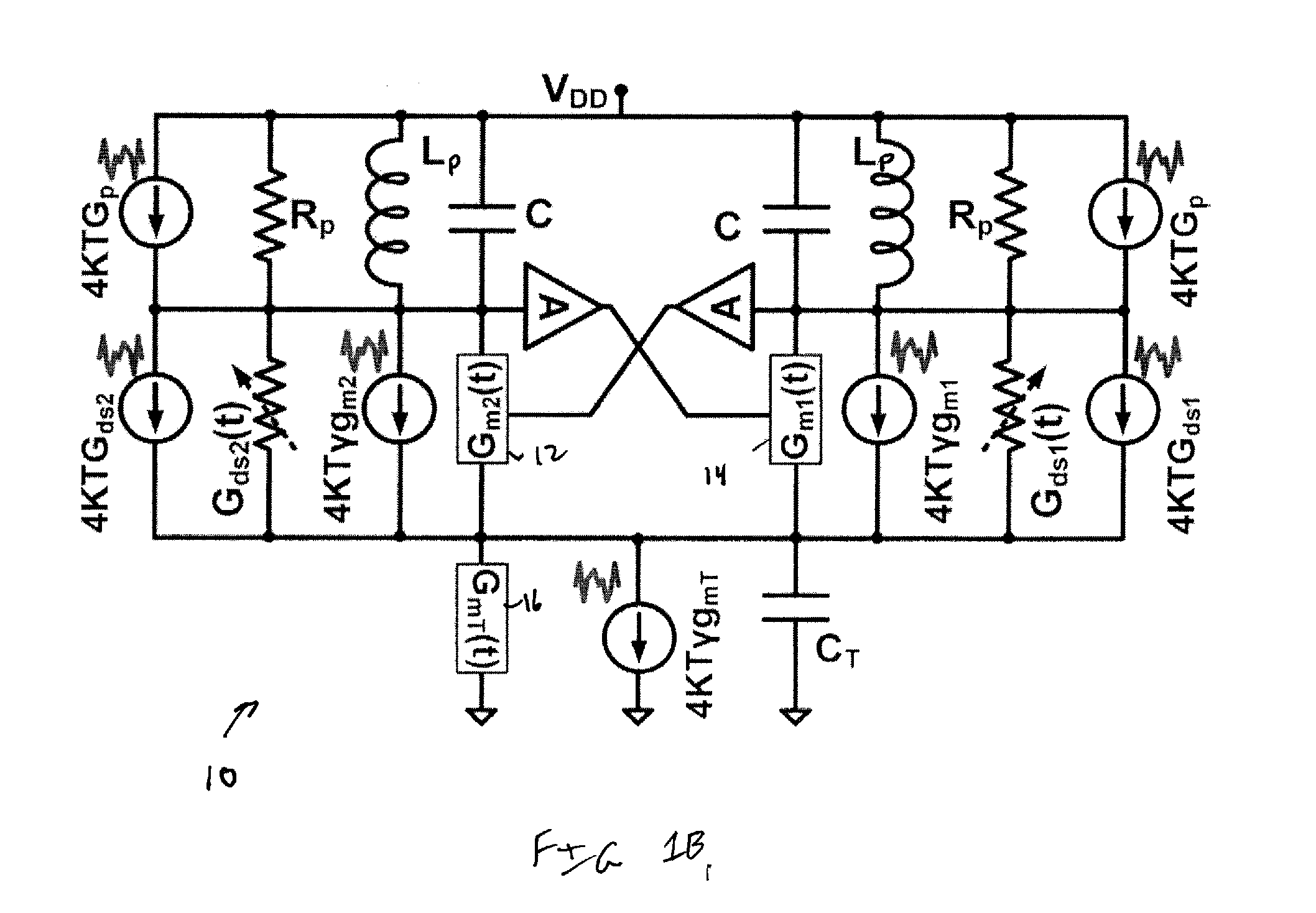Class-f CMOS oscillator
a class-f oscillator and oscillator technology, applied in the field of cmos-based class-f oscillator topology, can solve the problems of deteriorating the equivalent q-factor of the tank, injecting more noise into the tank, etc., and achieves the reduction of the effective noise factor of the oscillator, the effect of improving phase noise performance and reducing the effective impulse sensitivity function (isf)
- Summary
- Abstract
- Description
- Claims
- Application Information
AI Technical Summary
Benefits of technology
Problems solved by technology
Method used
Image
Examples
Embodiment Construction
[0056]The present invention is a high spectral purity and high power efficiency RF CMOS oscillator having applications in up / down conversion of desired baseband data to radio frequencies. The oscillator is a vital and essential building block of wireless or wireline communication systems. RF oscillators typically consume disproportionate amounts of power of an RF frequency synthesizer and burn more than 30% of the cellular RX power. The RF oscillator of the present invention exhibits reduced power consumption thereby greatly benefiting the overall transceiver power efficiency and battery lifetime.
[0057]The oscillation waveform of the RF CMOS oscillator of the present invention is pseudo-square across its LC tank rather than sinusoidal. It decreases the circuit-to-phase noise conversion of the oscillators meaning the oscillator exhibits improved power efficiency compared to prior art oscillator structures at the same phase noise performance. This translates directly to longer battery...
PUM
 Login to View More
Login to View More Abstract
Description
Claims
Application Information
 Login to View More
Login to View More - R&D
- Intellectual Property
- Life Sciences
- Materials
- Tech Scout
- Unparalleled Data Quality
- Higher Quality Content
- 60% Fewer Hallucinations
Browse by: Latest US Patents, China's latest patents, Technical Efficacy Thesaurus, Application Domain, Technology Topic, Popular Technical Reports.
© 2025 PatSnap. All rights reserved.Legal|Privacy policy|Modern Slavery Act Transparency Statement|Sitemap|About US| Contact US: help@patsnap.com



